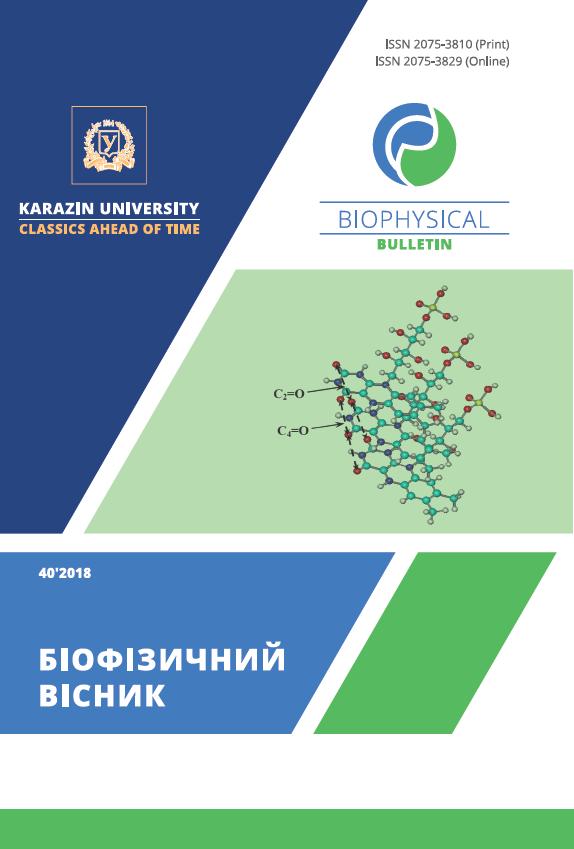Aggregation stability of nanoparticles based on rare-earth elements in different microenvironment and biological media
Abstract
Background: Development of new pharmacological forms able to increase the therapeutic effectiveness of already known drugs, to reduce side effects, and to increase the comfort of treatment for the patient is an actual task of modern medicine and pharmacy. To solve the problem, one of the most promising directions in this field is the use of various nanomaterials, among which in recent years the main attention was drawn to nanomaterials based on rare earth elements (REEs). At the same time, the question of the relation between the biological activity of nanomaterials and their physical and chemical properties, as well as the features of interaction with microenvironments in biosystems, remain controversial.
Objectives: Estimation of the aggregation stability of REE-based nanoparticles (NPs) in incubation media of different compositions and of the role of certain factors in stabilizing NPs in the biological microenvironment.
Materials and methods: Aggregation stability of GdYVO4:Eu3+, LaVO4: Eu3+, CeO2, GdVO4:Eu3+ NPs was studied using dynamic and electrophoretic light scattering techniques. NPs were incubated in 5% glucose or buffers: 50 mM Tris buffer (with different pH within of physiological values); Igla МЕМ medium; Krebs-Ringer buffer pH 7.4; HBSS-buffer (HEPES-buffered saline-solution) pH 7.4, in the absence or presence of 0.2% BSA, for 30 minutes and 24 hours. The effect of oxidized and reduced glutathione on the stability of solutions of NPs in Tris buffer at various pH values was also determined.
Results: The results have shown that in contrast to the stabilizing effect of 5% glucose solution significant aggregation of NPs is observed in saline systems. The highest degree of aggregation was observed in the Igla МЕМ and Krebs-Ringer buffer environment. Addition of 0.2% of albumin to all media prevented aggregation. Interaction of immunoglobulin with NPs leads to increase in hydrodynamic diameter, especially for some types of NPs, already at the smallest of the used protein concentrations. Oxidized but not recovered glutathione promoted aggregation of all types of orthovanadate NPs in acidic medium (Tris buffer pH=6.7).
Conclusions: The aggregative stability of NPs in the salt media increases significantly in the presence of serum albumin due to changes in the ratio of the electrostatic and steric components of the interaction of NPs with the microenvironment.
Downloads
References
Volkov, S.V., Kovalchyk, S.V., Genko V.M., Reshetnyak O.V. (2008). Nanochemistry. Nanosystems. Nanomaterials. Kyev: Naukova dumka. (In Ukrainian).
Chekman, I. S., Korneykova, Ya. M., Zagorodniy, M. I., Terentiev, A.O. (2008). Kvantovi mitky: klinichni ta farmakolohichni aspekty [Quantum Labels: Clinical and Pharmacological Aspects]. Mystetstvo likuvannia, 50(4), 72-74. (In Ukrainian).
Analizatory svoistv chastitc: katalog [Particle properties analyzers: catalog] (2015). Moskow: SocTrade. (In Russian).
Gai, S., Li, C., Yanq, P., Lin, J. (2014). Recent progress in rare earth micro/nanocrystals: soft chemical synthesis, luminescent properties, and biomedical applications. Chemical Reviews, 114(4), 2343-2389.
Narayanan, K. B., Park, H. H. (2013). Pleiotropic functions of antioxidant nanoparticles for longevity and medicine. Advances in Colloid and Interface Science, 201, 30-42.
Alili, L., Sack, M., von Montfort, C., Giri, S., Das, S., Carroll, KS., Zanger, K., Seal, S., Brenneisen, P. (2013). Downregulation of tumor growth and invasion by redox active nanoparticles. Antioxid Redox Signal, 19, 765-778.
Soenen, S.J., Parak, W.J., Rejman, J., Manshian, B. (2015). (Intra)Cellular Stability of Inorganic Nanoparticles: Effects on Cytotoxicity, Particle Functionality, and Biomedical Applications. Chemical Reviews, 115(5), 2109-2135.
Strojan, K., Leonardi, A., Breqar, V.B., Krizaj, I., Svete, J., Pavlin, M. (2017). Dispersion of nanoparticles in different media importantly determines the composition of their protein corona. PLoS ONE, 12(1): e0169552. https://doi.org/10.1371/journal.pone.0169552
Grygorova, G., Klochkov, V., Sedyh, O., Malyukin, Yu. (2014). Aggregative stability of colloidal ReVO4:Eu3+ (Re = La, Gd, Y) nanoparticles with different particle size. Colloids and Surfaces A: Physicochem. Eng. Aspects, 457, 495-501.
Authors who publish with this journal agree to the following terms:
- Authors retain copyright and grant the journal right of first publication with the work simultaneously licensed under a Creative Commons Attribution License that allows others to share the work with an acknowledgement of the work's authorship and initial publication in this journal.
- Authors are able to enter into separate, additional contractual arrangements for the non-exclusive distribution of the journal's published version of the work (e.g., post it to an institutional repository or publish it in a book), with an acknowledgement of its initial publication in this journal.
- Authors are permitted and encouraged to post their work online (e.g., in institutional repositories or on their website) prior to and during the submission process, as it can lead to productive exchanges, as well as earlier and greater citation of published work (See The Effect of Open Access).




